In the market for a chateau
International celebrities, successful businessmen and European aristocrats have all been drawn to what are perhaps France's most beautiful homes


Tall cypresses and silvery olive trees frame the graceful ochre façade of a 17th-century château. Sheltered by cornflower-blue shutters, large casement windows overlook topiary-strewn gardens, rows of vineyards hemmed in by stone terraces and an intricate forest barely broken up by a lake.
* Country houses and chateaux for sale in France
It’s easy to see why well-travelled couple Brad Pitt and Angelina Jolie fell for the charm of a French château. Last summer, they spent the days before the birth of their twins at 35-bedroom Château Miraval, near Aix-en-Provence, and have apparently signed a three-year lease on it—but are now rumoured to be looking for one to buy.
They’re not alone—international celebrities, successful businessmen and European aristocrats have all been drawn to what are perhaps France’s most beautiful homes. ‘In the past, this was a confidential market, and it’s now a fast growing one,’ says specialist agent Bruno de Saint-Exupéry of Emile Garcin in Périgord.
Many buyers turn to French châteaux because ‘they like places that have a soul, that keep alive the history of great families and famous people,’ says M. de Saint Exupéry. Others come for the grandiose architecture. ‘Some buyers like the fairytale châteaux with small towers, dating from the Renaissance of the 16th century or the neo- Renaissance of the 19th, but the purists generally prefer the 17th and 18th centuries, which bring unique period features and harmony,’ says Thierry Journiac of agents Terra Cognita. ‘They all invest into a lifestyle, a historic piece, sometimes a bit of a work of art where they can live in.’
But, he adds, a château is also ‘a place to escape, lay back and enjoy the peaceful way of life of the French countryside’.
This is one of the reasons that drew author Lady Colin Campbell to a château in ‘truly beautiful, authentically French’ Tarn (which she is now selling). She bought it almost by happenstance, having originally set out to purchase a farmhouse, which, however, fell short of her expectations. Instead, she fell in love at first viewing with an elegant château, rebuilt in the 19th century ‘with a restoration à la Palladio,’ because it was ‘perfectly proportioned and large enough to be spacious, but small enough to be cosy, which is a difficult combination to find’.
Sign up for the Country Life Newsletter
Exquisite houses, the beauty of Nature, and how to get the most from your life, straight to your inbox.
More generally, however, she ascribes the charm of French châteaux to their size and the quality of their build. ‘Any château, or any big house, has some intrinsic architectural merit over and above what smaller houses have, because it was built by great architects of the day, or by important families that wanted to make a splash,’ she says.
‘So usually they were better built, architecturally more interesting, more beautiful, and generally more comfortable.’ In her home, for example, ‘there are rooms you may not go in for eight months. We have 13 bedrooms and it’s great— it makes you able to breathe’. Thick château walls have their merits, too. ‘My children may be in their room and I in mine, and you don’t hear a word.’ Not to mention the additional advantage that ‘in summer, they keep the house much cooler and in winter, once you heat the house, they retain the heat. Now that heating is so expensive, that’s a useful commodity’.
But in these days of shaky demand and sliding property prices, there is more to a French château than just owning a private, energy-efficient piece of European art.
Both its rarity, and the nature of the buyers it attracts, ensure its value holds over time, particularly at the upper end of the market.
‘Prices for châteaux are very broad: from €750,000 to €7 million, €10 million or €15 million, if the château has plenty of land, woods, or a famous vineyard,’ says M. de Saint-Exupéry. ‘The market is working with the law of supply and demand for the middle range, but when the price is over €1 million or €1.5 million, it usually is about the fulfillment of dreams. It’s often influenced by intuition, different way of life, dreams, or even emotions.’
Although he warns that ‘it’s always spectacularly difficult to value a French château, because they’re all very different, and the mechanism that sets their price is often buyers’ and sellers’ whims’. Stewart Cook of Knight Frank’s affiliate Classic French Homes says that ‘generally, châteaux owners don’t need to sell, and buyers don’t have to buy. As a consequence, the prices of many châteaux will hold—the variable that will change is the length of time to sell’.
These days, he explains, buyers have become pickier. ‘The experience we’ve had over the past 12 months is that demand (by which I mean enquiries and visits) has held roughly constant, but there has been a marked change in the compromises that buyers are willing to make.’
Thierry Journiac of Terra Cognita has noticed a similar trend. He says he feels a slowdown ‘because clients see everywhere that real-estate prices are going to fall and so they’re more patient and cautious’. But, he adds, ‘it’s more psychological [than real] because the truth is that the slowdown doesn’t really concern exceptional properties where demand exceeds the offer’.
It helps that many château buyers are successful businessmen or top executives who don’t rely on mortgages and therefore are not really affected by the credit crunch. ‘High-net-worth and ultra-high-networth cash buyers are more and more numerous, and ownership of a château in France still represents a dream for many of them—the prices of châteaux remain quite affordable compared to the properties they own in big capitals such as London, Moscow or Hong Kong,’ says M. Journiac.
If anything, the credit crisis is having the unexpected effect of generating more interest in châteaux from private buyers looking for a bargain purchase. ‘The downturn is causing a number of rich people to take an avid interest in a market where great deals can be made, to secure assets that are unique, and where the long-term security of such an asset is great,’ says Mr Cook.
Because they lead hectic professional lives, many of these buyers want to be close to good communication links and, preferably, international airports.
‘An undeniable factor in adding value to a property is the proximity to new highspeed roads or train links, and airport facilities,’ says M. de Saint-Exupéry. ‘Buyers who want to land a bargain have to go to more remote parts of the country.’
Of course, both transport links and the number, quality and periods of châteaux for sale vary from place to place. ‘The main regions for châteaux are the Loire, the South-West, Normandy and Burgundy,’ says M. Journiac.
That said, only a few buyers set out to look for a château in a particular region. ‘Some are after a property in a specific area, and for them châteaux are only one of the styles they’re interested in. Others are more interested in finding a property that suits them, and its location is of secondary importance,’ says Mr Cook. ‘This is particularly true of second-home owners, who will spend only a few weeks a year at the property to unwind.
‘To a certain extent,’ he adds, ‘with the second-home owners, the château market is not regional or national, but international— and even then it’s not tied to the type of property. I’ve had instances where the client’s choice was between a château, a beach house in Barbados, or a yacht with berth!’
Find the château of your dreams: top tips from Lady Colin Campbell
* Choose your château very carefully— if you don’t, living there ‘can sometimes be a gloomy experience’
* Check the outbuildings: ‘some are in a terrible state. You then end up with a beautiful château that has slum-like buildings near it’
* Make sure it’s not isolated: ‘An isolated château can be a problem because of burglars; you need to have somebody to keep an eye on your property when you’re not there’
* Strike up a relationship with neighbouring farmers, especially if you are not a farmer yourself: ‘most châteaux are on farmland and you need a farmer with a tractor to assist you—especially in winter if you get snowed in!’
Châteaux to snap up
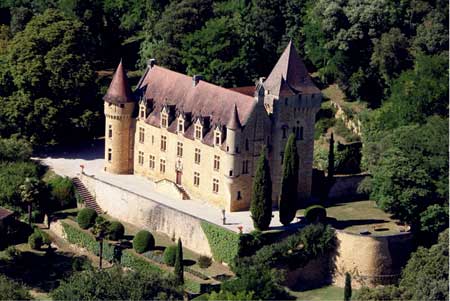
Renaissance-style château overlooking the river Dordogne, Périgord
It is hard to say what is more appealing about this château in Périgord—the graceful Renaissance-style building or the centuries-old forest around it. A façade with mullioned windows, pattée arrow slits, bartizan and towers sets the architectural tone of the property, but the interiors are to match.. The château, which is close to an 18-hole golf course and an international airport, is set in some 49 hectares of woodland and parkland overlooking the river Dordogne. A beautiful caretaker’s house, a swimming pool, outbuildings and a stable are also on the grounds.
€5-7.5m through Emile Garcin (+33 (0)6 63 49 82 46; www.emilegarcin.fr).
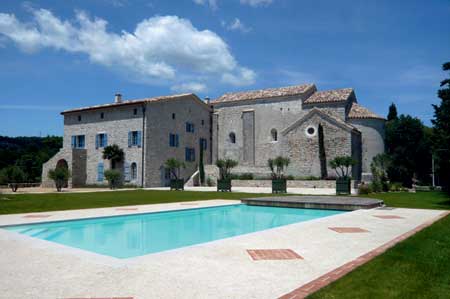
Late 18th century manoir in the Languedoc
Careful resotration, including the installation of a new swimming pool with views of the church is complete and now, according to agents Philip Hawkes, 'It's ready to be played with.'
€3.8 million (+33 1 42 68 77; www.philiphawkes.com)
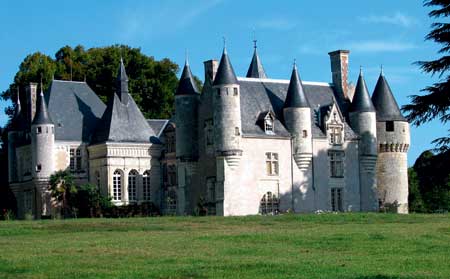
Chateau de Bussiere in the Loire
Centuries of history have shaped the Château de Bussière, in the Loire. It originally dates from 1234, but it has been modified over time to achieve the present Renaissance-style look—a dazzling white sequence of turrets and towers set against a lush lawn. Fully restored twenty years ago, it is now a private, peaceful, luxurious home with eight bedrooms and some 10,760 square feet of living space.
€4m through Winkworth (020 8576 5582, www.winkworth.co.uk).
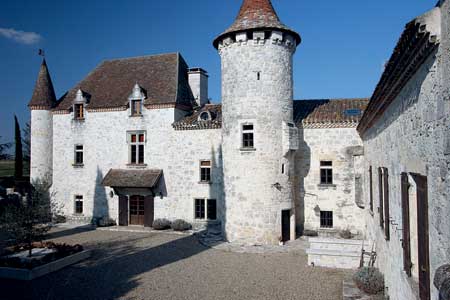
Medieval chateau in Lot-et-Garonne
‘Magical from top to bottom’ is how selling agents Classic French Homes describe this eight-bedroom medieval château in Lot-et-Garonne. Hidden behind a candid façade broken up by tower and turret lie atmospheric interiors with grand fireplaces, oak doors with wrought iron fittings and secret staircases. A painstaking renovation has added contemporary touches, such as a modern kitchen and sleek ensuite bathrooms—including one with an extraordinary rolltop bath—which create a pleasant contrast with the medieval feel. The château, which stands on a ridge overlooking an idyllic valley and lake, is just one and a half hours from Bordeaux, Toulouse and Bergerac.
€2.85m (+33 (0)5 53 23 32 13, 020 7629 8171; www.classic-french-homes.com).
- This article has been amended from the original published in Country Life International Autumn (October 8, 2008). The properties for sale above now have their correct descriptions.
Country Life is unlike any other magazine: the only glossy weekly on the newsstand and the only magazine that has been guest-edited by HRH The King not once, but twice. It is a celebration of modern rural life and all its diverse joys and pleasures — that was first published in Queen Victoria's Diamond Jubilee year. Our eclectic mixture of witty and informative content — from the most up-to-date property news and commentary and a coveted glimpse inside some of the UK's best houses and gardens, to gardening, the arts and interior design, written by experts in their field — still cannot be found in print or online, anywhere else.
-
 380 acres and 90 bedrooms on the £25m private island being sold by one of Britain's top music producers
380 acres and 90 bedrooms on the £25m private island being sold by one of Britain's top music producersStormzy, Rihanna and the Rolling Stones are just a part of the story at Osea Island, a dot on the map in the seas off Essex.
By Lotte Brundle Published
-
 'A delicious chance to step back in time and bask in the best of Britain': An insider's guide to The Season
'A delicious chance to step back in time and bask in the best of Britain': An insider's guide to The SeasonHere's how to navigate this summer's top events in style, from those who know best.
By Madeleine Silver Published
-
 What to expect when you're expecting (to move to the countryside)
What to expect when you're expecting (to move to the countryside)On March 28, agents Michael Graham will be showcasing some of their best countryside properties at their west London office.
By James Fisher Published
-
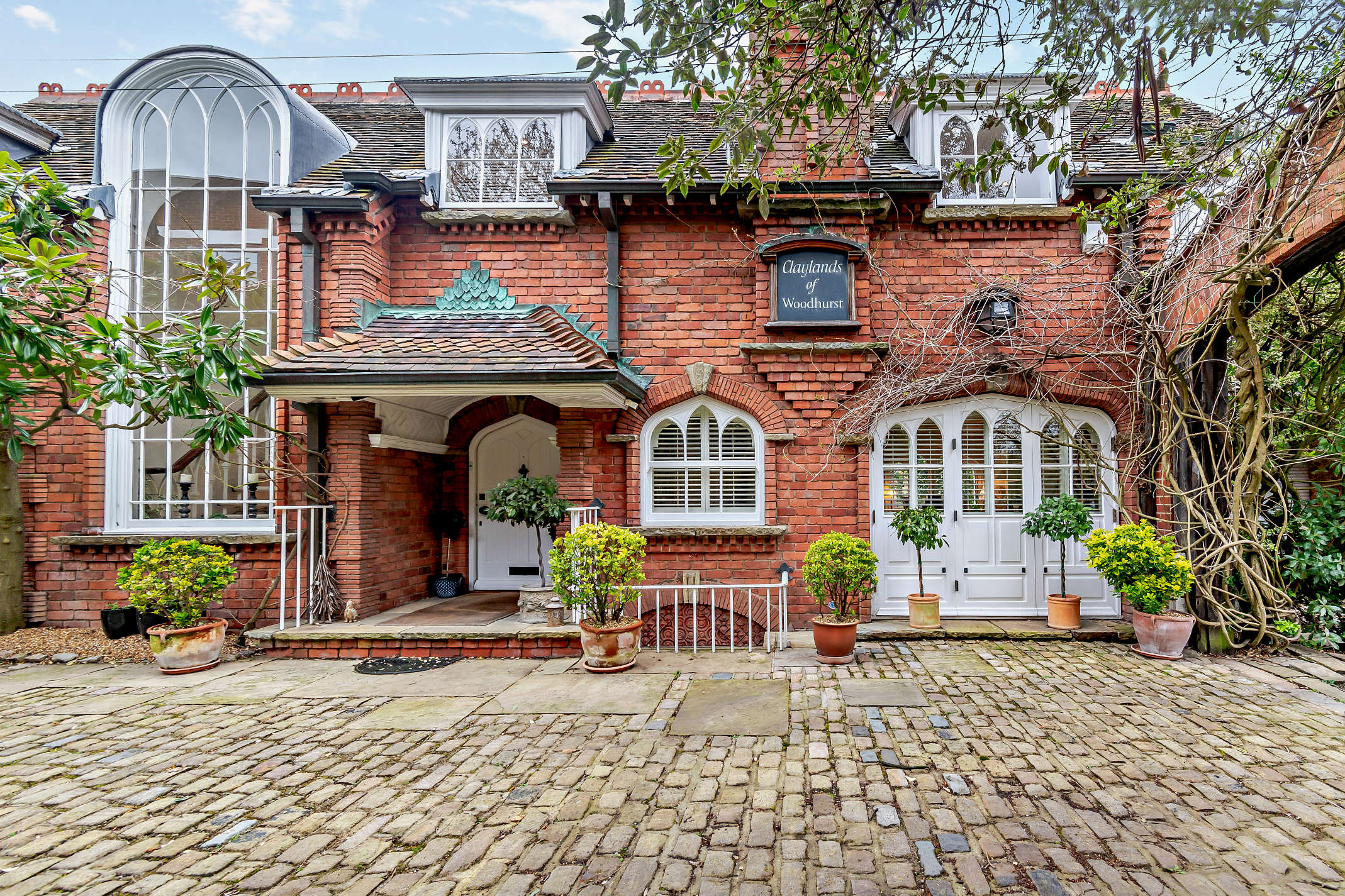 Property Talk: When is the right time to downsize?
Property Talk: When is the right time to downsize?Sometimes our homes can get too big for us, meaning it’s time to downsize. Here, we speak to those involved with the process.
By James Fisher Published
-
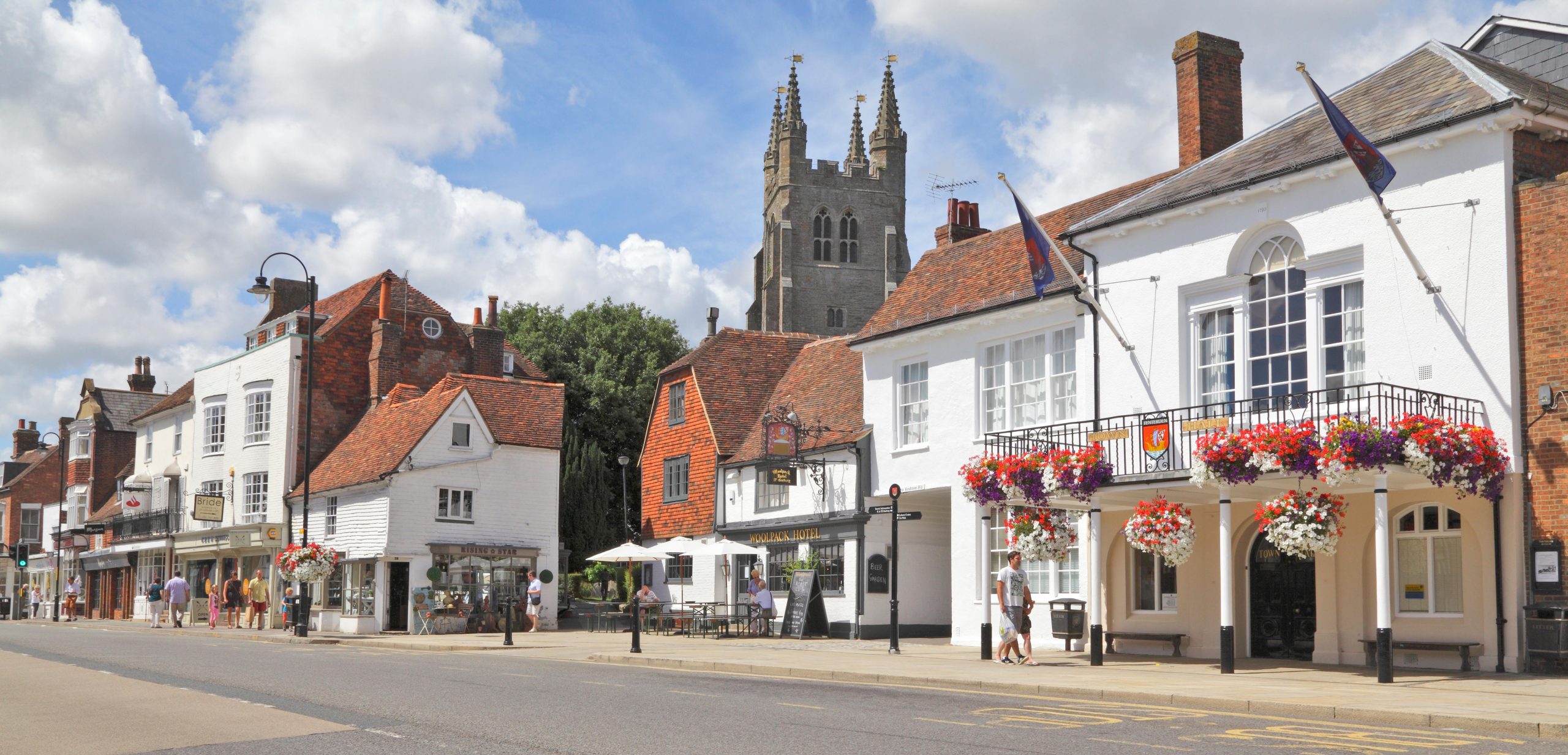 How to win in the property market: Tips from some of Britain's best buying agents
How to win in the property market: Tips from some of Britain's best buying agentsWhether looking for the perfect family home or negotiating on price, buying agents do the heavy lifting–and are well used to analysing the market. Carla Passino gets advice from a few of the best.
By Carla Passino Published
-
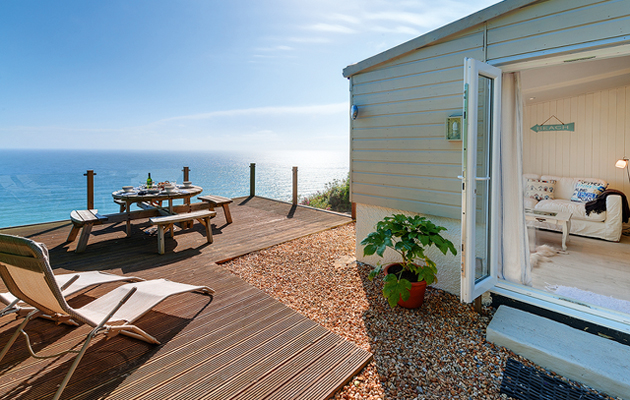 Top tips on renting your holiday home
Top tips on renting your holiday homeThe holiday-home market on the Cornish coast looks set for a lively summer. Arabella Youens finds out how to make the running costs bearable.
By Arabella Youens Published
-
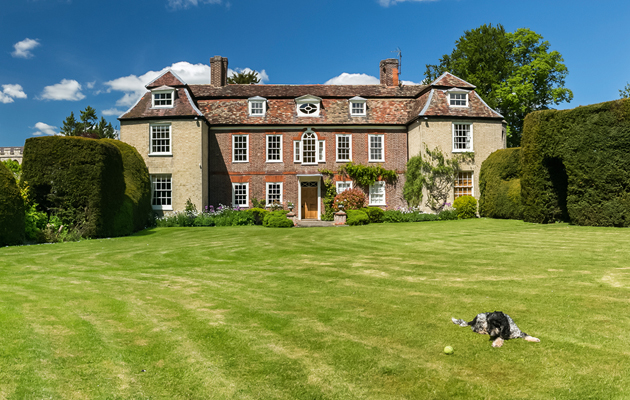 Tips and advice for holiday home owners
Tips and advice for holiday home ownersWith the start of the summer season nearly upon us, more and more country-house owners are dipping into the short-let scene.
By Country Life Published
-
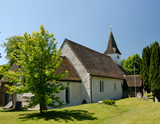 Property guide to Elstead
Property guide to ElsteadFreddie Mack shares the secrets of Elstead in Surrey, a prime spot for young families looking for properties outside London near good schools
By Country Life Published
-
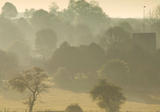 Property guide to Cheriton
Property guide to CheritonIf you're considering buying property in or around Cheriton this year, take a look at our property guide which covers where to buy, what prices to expect and where to have fun in the area
By Country Life Published
-
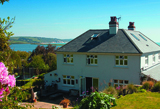 Make your holiday let work for you
Make your holiday let work for youIf you're considering renting out your holiday property prepare by reading this first
By Country Life Published
